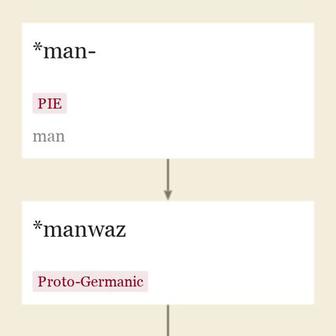pitchman n.
1926, American English, from pitch (n.1) in the sales sense + man (n.).
Entries linking to pitchman
1520s, "
Meaning "
Some noun senses are from the older sense of pitch as "
Sales pitch in the modern commercial advertising sense is from 1943, American English; pitch in the sense of "

"
Sometimes connected to root *men- (1) "
Specific sense of "
Man also was in Old English as an indefinite pronoun, "
As "
Man-about-town "
So I am as he that seythe, 'Come hyddr John, my man.' [1473]
MANTRAP, a woman's commodity. [Grose, "Dictionary of the Vulgar Tongue," London, 1785]
At the kinges court, my brother, Ech man for himself. [Chaucer, "Knight's Tale," c. 1386]
updated on November 20, 2012